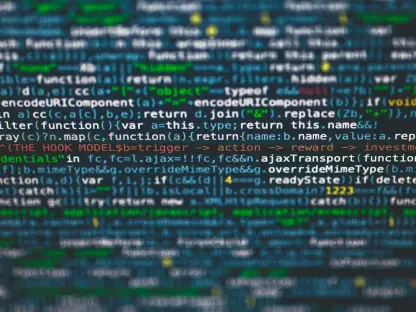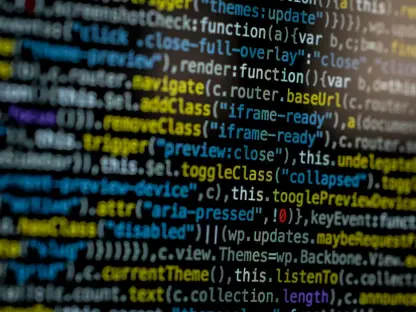In the ever-evolving world of software development, ensuring the quality, security, and maintainability of code has become paramount. A significant shift in focus within the software development lifecycle (SDLC) has led to the emergence of the “start left” approach. This proactive strategy emphasizes integrating code quality assessments from the earliest stages of development, offering a more robust framework to tackle the challenges of modern software demands. This article delves into the essence of the start left approach and its impact on improving software code quality.
Understanding Clean Code
Clean code lies at the heart of high-quality software development. Defined as code that is easy to read, maintainable, and adheres to consistency and clarity, clean code fosters better collaboration among developers and ensures a more secure and reliable end product. Attributes of clean code include comprehensive documentation, consistent structure, high reliability, security, and performance efficiency. The importance of clean code cannot be overstated, as poor code quality can lead to severe consequences, such as system outages and security breaches, which can be costly and damaging.
In the context of modern software development, clean code not only facilitates easier debugging and maintenance but also helps in the seamless onboarding of new team members. When code follows a clear and consistent standard, developers can quickly understand and contribute to the project, reducing the time needed for training and eliminating the risks of misunderstanding existing code. Moreover, clean code ensures that software can adapt to future changes and expansions without introducing unforeseen vulnerabilities or bugs, thereby extending the lifecycle of the product and optimizing the return on investment in its development.
The Limitations of the Shift Left Approach
The traditional “shift left” approach, which involves moving testing and quality checks earlier in the SDLC, has gained popularity for its ability to catch issues early. However, as beneficial as this model is, it has its limitations, especially with the rise of AI-generated code. The primary drawback is that it focuses on identifying problems only after the initial development has started, which can result in an overwhelming number of issues that developers need to address. Furthermore, conventional tools used in this approach often generate a high volume of minor issues, making it challenging for developers to prioritize and fix the most critical problems efficiently.
Another critical limitation of the shift left approach is the time and resources it demands from development teams. While catching bugs and vulnerabilities earlier is indeed valuable, the sheer volume of issues often detected can lead to significant delays in the development process. Consequently, teams may find themselves inundated with a backlog of minor issues, struggling to distinguish between minor bugs and severe vulnerabilities that require immediate attention. This scenario can reduce overall productivity, as developers split their focus between addressing endless minor issues and ensuring the core functionality and security of the application.
Embracing the Start Left Approach
The start left strategy presents a more proactive alternative to the traditional shift left model. By integrating code review and analysis tools right from the inception of the SDLC, potential issues can be identified and addressed even before they evolve into significant problems. This approach emphasizes continuous feedback, collaborative development, and early tool integration to prevent bugs and vulnerabilities from creeping into the codebase. With the start left approach, developers are equipped with effective and user-friendly tools that seamlessly integrate into their IDEs and CI/CD pipelines, ensuring higher quality code from the outset.
Adopting a start left approach also means that development teams can instill a culture of quality from the very beginning. By fostering an environment where developers consistently assess code quality as they write it, the likelihood of introducing bugs or security flaws drastically decreases. This method not only improves the immediate quality of the software but also encourages best practices across the team. Early feedback loops and real-time analysis empower developers to make informed decisions and produce cleaner, more efficient code, ultimately leading to a more robust and reliable software product.
Clean as You Code: A Preventive Methodology
One of the fundamental methodologies underpinning the start left approach is the “Clean as You Code” model. This proactive practice involves continuous evaluation of code quality and security from the beginning of the development process, preventing the accumulation of technical debt—issues that, if left unresolved, can become costly to fix down the line. By adhering to the Clean as You Code principles, developers can maintain a high standard of code quality and security throughout the development lifecycle, ensuring a more reliable and maintainable software product.
Additionally, the Clean as You Code methodology advocates for preventive measures over reactive fixes. Instead of waiting for code reviews or testing phases to surface problems, developers continuously monitor and enhance their code. This ongoing diligence minimizes the risk of accruing technical debt and promotes a more fluid and agile development process. As a result, teams can focus on innovation and feature development rather than being bogged down by lengthy bug fixes and refactoring sessions, leading to faster release cycles and a better end product for users.
The Impact of AI on Code Quality
The integration of AI in software development has revolutionized the speed and volume of code generation. However, AI-generated code, while often syntactically correct, may not always adhere to best practices for clean code. This presents a unique challenge, as such code requires rigorous scrutiny to ensure it meets the necessary quality and security standards. The start left approach is particularly critical in this context, as it provides a robust framework for evaluating and improving AI-generated code from the very beginning, thereby mitigating potential risks and enhancing overall code quality.
Moreover, the influence of AI on code quality extends beyond just syntactical correctness. AI can introduce patterns and structures that, while functional, may not align with the intended architecture or design principles of a project. These discrepancies can lead to increased complexity and potential hidden flaws that may not be immediately evident. By implementing a start left approach, teams can set strict guidelines and automate the detection of deviations, ensuring that AI-generated code conforms to established standards and maintains the overall integrity of the software.
Effective Tooling and Economic Implications
Not all code-scanning tools are created equal. Effective tooling should prioritize the detection of significant issues over the sheer quantity of problems identified. Tools that inundate developers with numerous minor issues can detract from addressing more critical problems, leading to inefficiencies and increased technical debt. The economic implications of technical debt are substantial, with estimates suggesting it costs businesses around $2.4 trillion annually. By adopting the start left approach and Clean as You Code methodologies, organizations can significantly reduce these costs by preventing the accumulation of technical debt and ensuring high-quality code from the outset.
A well-chosen set of tools can transform the development process by providing actionable insights without overwhelming developers. Tools that integrate seamlessly into existing workflows and offer clear, prioritized feedback can help teams focus on the most pressing issues first. This prioritization enables developers to resolve significant vulnerabilities and bugs more swiftly, reducing the risk of critical failures in production. Consequently, by minimizing technical debt and enhancing productivity, organizations not only save on immediate costs but also safeguard their long-term investments in software development.
Broader Industry Trends
In the rapidly changing world of software development, maintaining high standards of code quality, security, and maintainability is crucial. A notable trend within the software development lifecycle (SDLC) is the “shift left” approach. This proactive strategy involves integrating comprehensive code quality assessments right from the very beginning of the development process. By doing so, developers can more effectively address the numerous challenges posed by modern software requirements. This approach not only enhances the overall quality of the code but also bolsters its security and ease of maintenance.
The shift-left methodology pivots away from traditional development practices, where testing and quality checks often occur towards the end of the development cycle. By contrast, the shift-left approach embeds these crucial steps early on, allowing developers to identify and resolve issues promptly. This early intervention reduces the risk of encountering critical problems later in the development process, which can be more difficult and costly to fix.
The impact of the shift-left approach is substantial. By catching issues early, developers can avoid significant rework, reduce development costs, and speed up the delivery of software products. Moreover, embedding quality and security checks from the outset helps build more resilient software systems, ultimately leading to a better user experience. In essence, the shift-left strategy provides a more effective framework for tackling the demands of contemporary software development, ensuring that the end products are robust, secure, and maintainable.









